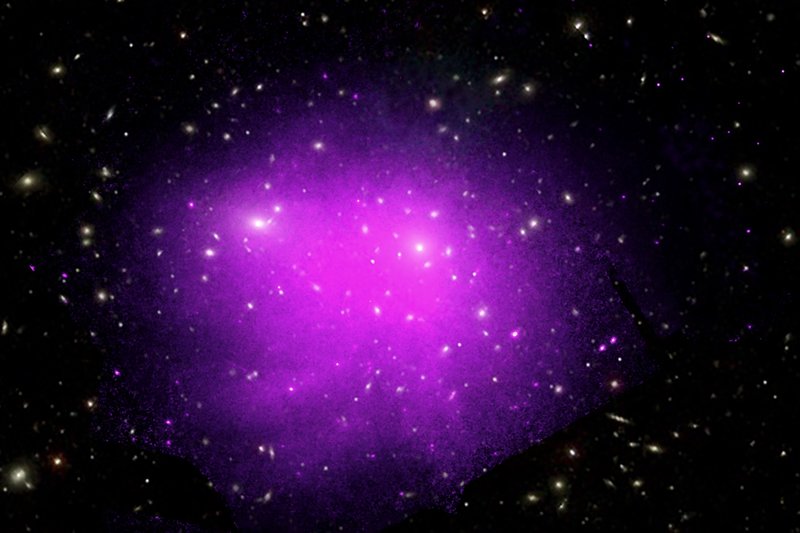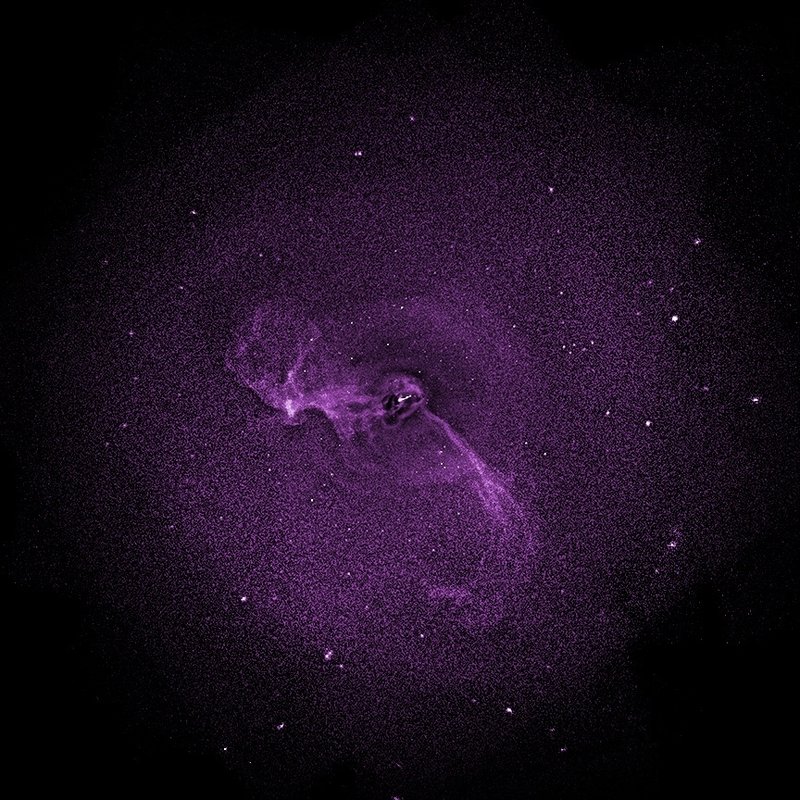
The dynamism of the Cluster of Galaxies, the Largest Object in the Universe
Galaxy clusters are the largest objects in the Universe.
They are approximately 10 million light years in size, weigh from 10¹⁴ to 10¹⁵ times the mass of our Sun, and contain tens to thousands of galaxies like our Milky Way galaxy.
When a galaxy cluster is observed with an optical telescope, it appears as a group of galaxies. On the other hand, when observed with an X-ray astronomy satellite, a galaxy cluster appears as a blurry mass of light.

This light is high-temperature gas with a temperature of 100 million degrees Celsius. It is called galaxy cluster gas. The mass of this gas in a galaxy cluster is so large that it far exceeds the mass of all the galaxies in the cluster combined.
Dark Matter and Clusters of Galaxies
Hot gas tends to scatter easily due to the high velocity of the particles it contains. The fact that it does not scatter indicates that an invisible gravitational source, dark matter, is distributed in the galaxy cluster, which significantly exceeds the mass of the gas, and keeps the gas in place.
And clusters of galaxies are still growing while gravitationally attracting surrounding matter (dark matter and gas).
Dark matter cannot be observed directly. However, high-temperature gas can be observed with X-rays. Since the motion of high-temperature gas is considered well correlated with that of dark matter, we can investigate the dynamic growth of galaxy clusters by clarifying the movement of high-temperature gas.
Unfortunately, even if we observe the gas's motion, recording the movement as a movie is impossible. Clusters of galaxies evolve very slowly, and it takes several hundred million years for us to recognize a significant change in their appearance due to growth.
This is where the Doppler effect comes in. This is an effect in which the pitch of the sound of an ambulance siren (frequency of sound waves) changes when the ambulance is approaching and when it is moving away.
Light, like sound, is a wave and therefore has the Doppler effect. X-rays from galaxy clusters include X-rays emitted by heavy elements such as iron (X-ray emission lines). XRISM precisely measures the energy of the emission lines and can detect the motion of the gas with high accuracy.

Figure 2 shows a simulation of what the iron emission lines from the A2029 galaxy cluster would look like if observed with XRISM. XRISM allows us to measure the energy of the emission lines with a high degree of accuracy and to clearly see the "mountain shape" of the emission lines. This allows us to study the motion of hot gases, such as swirling turbulence.
The Largest Accelerator in the Universe
The Minoceros Cluster of Galaxies introduced in Figure 1 is thought to be a place where two clusters of galaxies have collided and merged to form a larger cluster of galaxies. Radio observations of this cluster have revealed that cosmic rays are distributed throughout the entire region.

Cosmic rays are particles such as electrons, and nuclei accelerated to almost the speed of light. On Earth, they are observed as natural radiation. XRISM is observing the turbulence in the Kaminoceros Cluster to understand how the cluster acts as the largest accelerator in the Universe.
Black Holes and Clusters of Galaxies
In many cases, a black hole, whose mass exceeds 100 million times the mass of the Sun, exists at the center of a galaxy cluster. This black hole grows by swallowing the surrounding gas. When it does so, it ejects a high-speed gas stream called a jet, releasing enormous amounts of energy. The jets collide with the cluster gas, heating it while shaking and stirring it.
There is a theory that the cluster gas near a black hole loses energy by emitting strong X-rays and cools down, but the heating by the jet keeps it from getting too cold, like an air conditioner.
However, this theory has not been fully verified. Therefore, XRISM aims to detect the motion of gas around a black hole and elucidate the Universe's temperature regulation mechanism involving this black hole.

(Credit):NASA/CXC/Univ. of Cambridge/C. Reynolds et al.
Figure 3 is an image of the center of the Perseus cluster of galaxies. XRISM is scheduled to observe the Perseus cluster early after launch. The observations will tell us how the gas structure corresponds to the gas motion.
We are Pieces of Stars -Factories and Distribution Routes of Elements
XRISM is also trying to understand how the heavy elements of the Universe, especially carbon, nitrogen, oxygen, and iron, which make up your body, are synthesized in stars born in galaxies and are now widely distributed throughout the Universe.

Figure 4 is an X-ray image of the center of the Virgo cluster of galaxies. Gas containing many heavy elements is expected to spread outward from the inner part of the cluster by the flow of gas generated by the central galaxy's black hole activity.
XRISM will observe this string of galaxies in the Virgo cluster and confirm that it contains many heavy elements and that the string is moving outward, thereby revealing the process by which the Universe became a world filled with various elements.
Author: Yutaka Fujita
(This article was translated from Japanese.)
